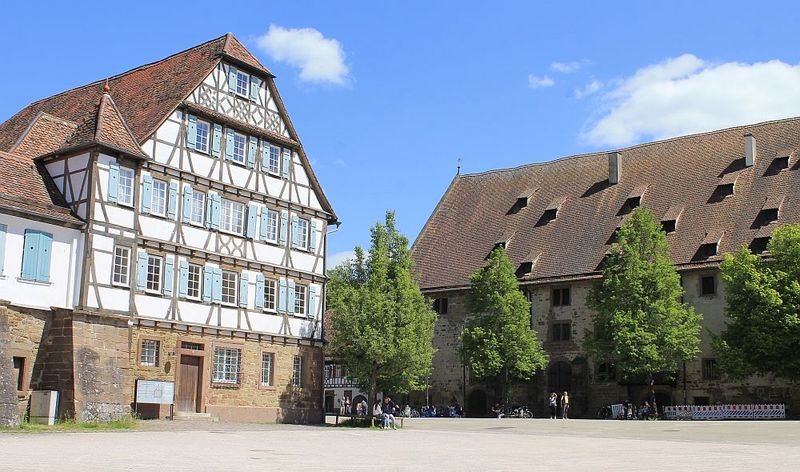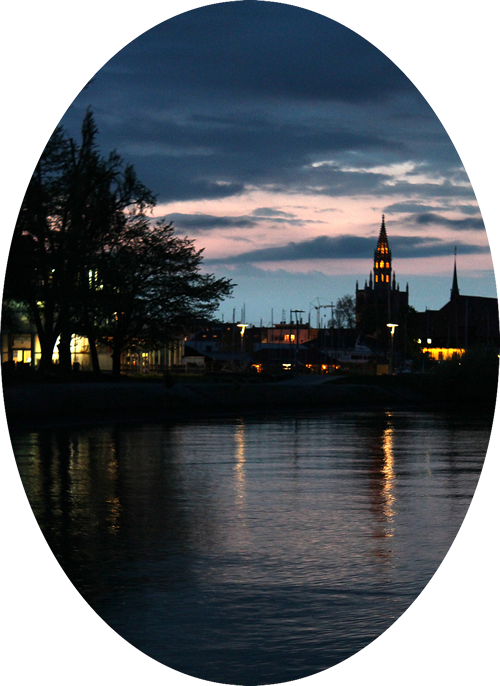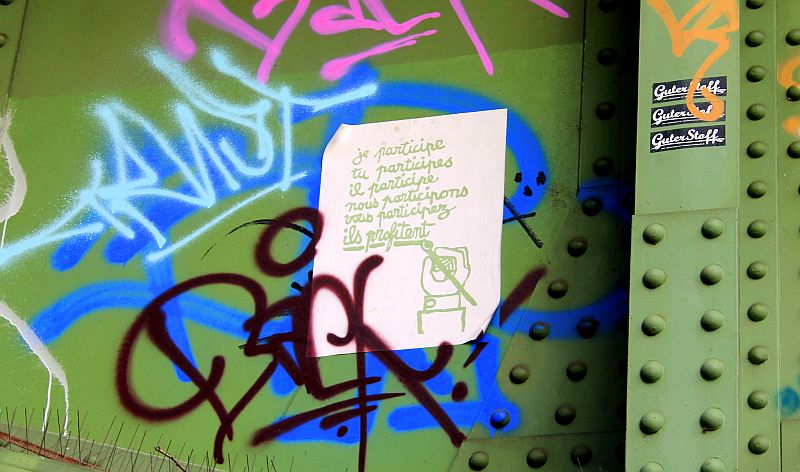URBNANCE
Urban human-nature resonance for sustainability transformation
URBNANCE Blog
Flötenspiel (1940) by Hermann Hesse:
A resonance-specific analysis and embedding in the sustainability context
Introduction
Hardly any other German writer is able to touch his readers through his writings as much as Hermann Hesse (1877-1962), winner of the Nobel Prize for Literature. Whether through his strongly autobiographical works such as Unterm Rad (1906), the spiritual search for meaning in life in Siddhartha (1922) or simply through his multifaceted and eventful biography. Beside his creative mind, which made him write his first fairy tales at the age of 10, Hesse also knew about emotional depths that made him grapple with himself, the world, and other people throughout his life. The known suicide attempt in his youth as well as his writings may indicate that he was aware of the finiteness and vulnerability of life.
Hesse's life phase at Maulbronn monastery school, Germany

Despite all the difficulties that his life entailed and facing the difficult times in which Hesse wrote the poem linked above Flötenspiel - 1940 – in my opinion it is filled with trust in life, a deep connection with oneself, nature, and the soul of the world. I would like to trace this resonance wire in the following paragraphs, this "vibrating wire between subject and world" (Rosa, 2019, p. 279) in the sense of Hartmut Rosa's resonance theory, and then embed it in sustainability science.
Resonance in the individual verses of the poem
- 1)
The first verse reveals a house at night that is hardly seen because it is surrounded by nature. There is a balance between the built and the natural environment, which is not disturbed by built massiveness, but just a window shimmers gently in the moonlight. This almost tender resonance of the moon through the built window spreads the light in different directions and visually announces the flute player indirectly, who otherwise remains in the "invisible space" (im "unsichtbaren Raum"). No over-present image of the human being emerges, and he remains in the background of the action. He comes indirectly to the foreground with something else: With his loving connection to the world.
Shimmering light at night

- 2)
The fluteplayer plays a song, a timeless content that flows “graciously” into the night and becomes one with it. Agency is attributed to the song, the ability to speak with its own voice. The attribute graciously as a relational value stands for a loving and gentle togetherness, a togetherness that connects the flute player with everything else. As the song flows, an organic image emerges that resembles a river seeking its way in the world. The flute player becomes his song, music becomes water, water becomes eternity – (transformations and appropriations, which are now also increasingly being investigated through studies in a scientific context). And this eternity does not differentiate in country borders, the sensual feeling of home encompasses the entire earth, the fluteplayer is a citizen of the earth. The last line of the second verse expresses something astonishing and reveals core aspects of resonance – trust and self-efficacy. "As if every path were accomplished" ("Als wäre jeder Weg vollbracht") testifies confidence in an existing resonance wire that things will go well, and the flute player's goals will come true which enables him to thus "feel supported or even secure in a responsive, accommodating world" ("in einer antwortenden, entgegenkommenden Welt getragen oder sogar geborgen zu fühlen", Rosa, 2010, p. 59, italics in the original).
- 3)
In the third verse there is a synchronization of the world’s sense with breathing. An integration of the head, the body, and the soul – they all flow together in breath. Although as humans we can regulate our breath via our heads temporary, we cannot control it, which is why sometimes in body-therapeutic methods they say that it breaths (Rosa, 2019, p. 99). Also, breath and what it stands for has agency: It is there and takes care of us, as Goethe already expressed in his poem "There are two graces in taking breath" (" Im Atemholen sind zweierlei Gnaden"). And we humans open ourselves up to the breath and let it go again. As the sense of the world has shown itself, the heart can trust, show itself and go into resonance with everything that is.
Resonance, art, and sustainability
The resonant mode of relating to the world, which includes the dimensions of the heart, mind and body is conveyed through Hesse's flute player. In particular, the sensuality and proximity of art to the heart and the sense of the world stand out here and illustrate the importance of these inner dimensions in order to connect individually. The current emphasis of sustainability science on turning the gaze inwards again in order to identify and transform destructive attitudes can be supported by touching art. At present, more and more art-related academics are devoting themselves to this, who understand the importance of artistic creation in breaking through existing routines and structures.
Touching integration of mind-body-heart through different expressions (here: a public art project in Vienna, Austria)

Overcoming the one-sided human-nature dominance and the appreciative reweaving with nature are the main targets of our resonance project. Here we try to address the dimensions heart, body and mind, among others, in order to think being touched integratively and to make it practically possible with the help of interventions and transfers. Therefor this blog is a bridge to express different forms of knowledge and to give a voice to, for example, the essay or poetry as representatives of art (Rosa (2019, p. 499) is certain that they have their "own, contradictory voice"). As the transformation researcher Norbert Koppensteiner (2018) explains, heart and mind differ in their written expression. Reconnecting them can promote a peaceful integration of the different parts and voices – in ourselves and in the world.
Author: Susanne Müller
If you have any comments or question on the essay, feel warmly invited to contact the author (s.mueller@ioer.de).
2024
February
January
2023
December
October
June
Patagonien – a place for resonant relationships?
May
Humbleness towards the Unverfügbarkeit of sleep – About cycles, sleep rituals and Mother Earth
February
2022
November
Lending nature our voice - role play in search of partnerships with nature
October
Moving from crisis to resonance: A summer cinema
September
The need for self-efficacy in times of powerlessness.
Caring for nature in the city.
July
The unavailability of the own voice. What does Amos really want to "say"?
June
Mai
First insights on human-food relations through the interaction with urban dwellers in Dresden
March
Responsive relationships:
The treasure of vulnerability
January
2021
December
Christmas ‒ eating in the spirit of the feast of love?
Nurturing our relation with nature and ourselves in the dark season